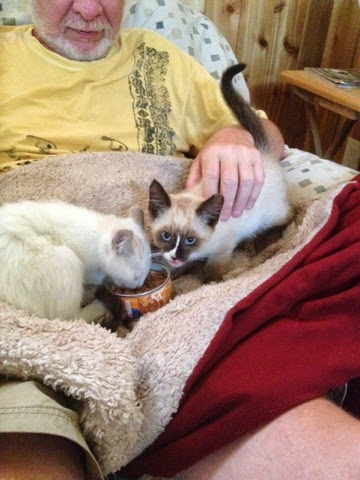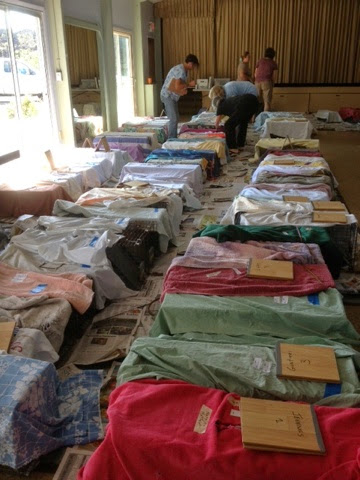Tuesday, April 29, 2014
The Daily Drivel
Sunday, April 27, 2014
How I Start Sweet Potatoes
Grains and Seeds for the Chickens
One of my goals for this homestead is to be fairly self reliant. Thus buying outside livestock feed is not on the roster. But raising egg laying chickens without commercial feed is challenging, assuming that one wants to get a decent number of good sized eggs. Yes, I know people who buy zero feed for their hens and "feed" them by simply letting them free range. But then they don't get very many eggs either. Plus they have to have enough open space for their usually only few hens to forage in. And a bigger factor...no gardens that the chickens can get to. Chickens eat up or ruin a garden in no time flat! I have 50+ hens (currently 79 but not all laying) and plenty of gardens that can't be protected by 6 foot high fences, thus not the right situation for letting birds run amuk.
Plus my girls are penned every morning until lunchtime so that the majority of the eggs are laid in the nestboxes for easy gathering. They free range in the afternoon and return to their roosts in the pen each dusk. So they need to be fed every morning and supplemented in the late afternoon.
Mornings they get Mama's famous chicken slop & glop, as I like to call it. Some ingredients are cooked. Others are ground up in the blender.
All sorts of greens, kitchen waste, garden waste, foods specifically grown for them, foraged foods, and cooked brown rice mixed together. Though you may not believe it, the girls love slop & glop. If presented a bowl of layer pellets beside a bowl of slop & glop, they eat the slop & glop first every time. Their afternoon snack consists of grains plus meat if I have it. Most of the grains presently are purchased. But I'm gradually growing more and more of my own.What sort of grains am I interested in for the hens? .......
....Corn (my chickens love it). I've been fairly successful growing corn. Now I just need to grow more of it. They will eat it whole so I won't need to crack it. My girls actually prefer it fresh on the cob. Feeding it fresh like that cuts down on the work and time I have to put into feeding them.
....Wheat (another grain that chickens love). This year I'm growing good sized blocks of wheat. I haven't had to thresh it. I harvest the heads, let them dry. The hens will peck the kernels out themselves.
....Rice and sunflowers. As with the wheat, I'm growing a lot more this year. I'm having problems with sunflowers though. Pollination problems. So I'm grinding the heads just before they start to dry, mixing it in the slop & glop. I'm finding about half the hulls have no seeds in them.
....Flax, sesame, barley, and quinoa are new crops for me this year. We'll see how well they grow here.
....Oats. This year I'm going to try hull-less oats. The hens weren't all that interested in regular oats.
More experiments for grains includes Job's tears, amaranth, field peas, and lentils. The girls already get various beans, peas, and cowpeas that are cooked in the slop & glop. I don't know if chickens will eat pigeon peas or buckwheat but I've got some growing down on the seed farm this year.
I've had people ask me what my formula, my recipe, is for a scratch mix. At this point, I don't have one. The girls just get what I have on hand. Since they are already getting a very wide assortment of foods in their diet, I'm not concerned about getting the perfect scratch formula. To date I haven't had extra grains and seeds, so they get everything I have.
Why do I use scratch grains? #1- the hens love them. #2- It's a simple way to get them back into their pen at the end of the day. #3- It's good nutrition.




















































